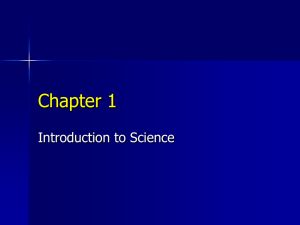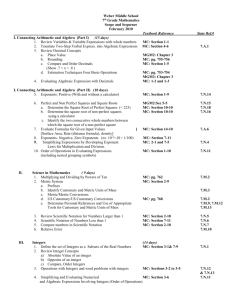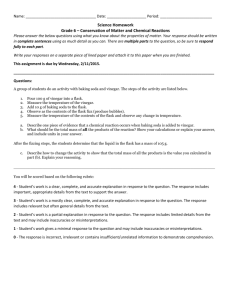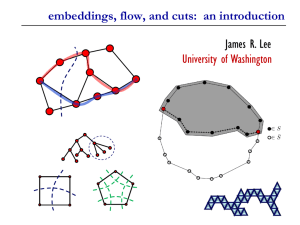SMART Goal for: - Dr. Bobb Darnell
advertisement
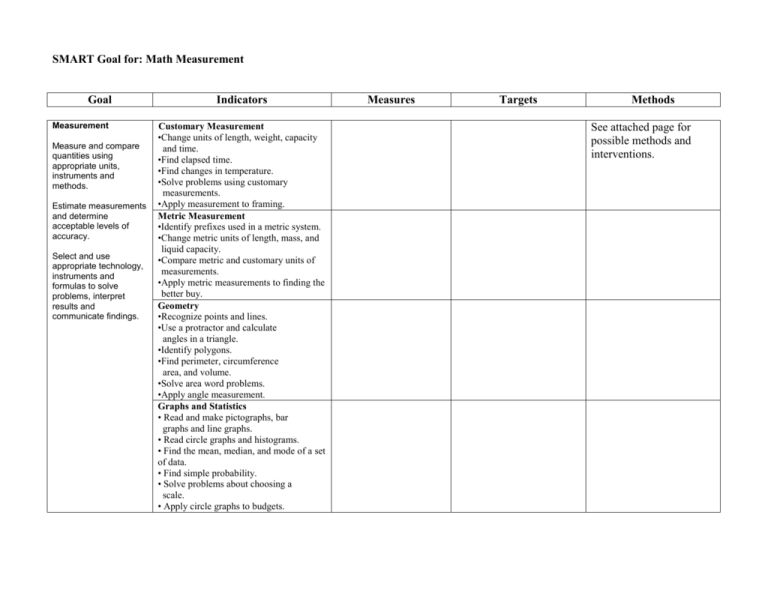
SMART Goal for: Math Measurement Goal Measurement Measure and compare quantities using appropriate units, instruments and methods. Estimate measurements and determine acceptable levels of accuracy. Select and use appropriate technology, instruments and formulas to solve problems, interpret results and communicate findings. Indicators Customary Measurement •Change units of length, weight, capacity and time. •Find elapsed time. •Find changes in temperature. •Solve problems using customary measurements. •Apply measurement to framing. Metric Measurement •Identify prefixes used in a metric system. •Change metric units of length, mass, and liquid capacity. •Compare metric and customary units of measurements. •Apply metric measurements to finding the better buy. Geometry •Recognize points and lines. •Use a protractor and calculate angles in a triangle. •Identify polygons. •Find perimeter, circumference area, and volume. •Solve area word problems. •Apply angle measurement. Graphs and Statistics • Read and make pictographs, bar graphs and line graphs. • Read circle graphs and histograms. • Find the mean, median, and mode of a set of data. • Find simple probability. • Solve problems about choosing a scale. • Apply circle graphs to budgets. Measures Targets Methods See attached page for possible methods and interventions. Improving Math Performance Target Indicators Number sense Demonstrate and apply a knowledge and sense of numbers, including numeration and operations (addition, subtraction, multiplication, division), patterns, ratios and proportions. Measurement Estimate, make and use measurements of objects, quantities and relationships and determine acceptable levels of accuracy. Algebra Use algebraic and analytical methods to identify and describe patterns and relationships in data, solve problems and predict results. Geometry Use geometric methods to analyze, categorize and draw conclusions about points, lines, planes and space. Data Analysis, Statistics, and Probability Collect, organize and analyze data using statistical methods; predict results; and interpret uncertainty using concepts of probability. Instructional Strategies 1. Provide immediate feedback about progress (especially via computers). 2. Modeling and guided practice using tightly sequenced forms of explicit instruction 3. Explicit instruction in the use problem representation and problem solving strategies 4. Small group, cooperative learning, and peer tutoring 5. Providing teachers with regular updates on student performance in terms of state standards 6. Teaching prerequisite skills regarding number sense 7. Providing direct instruction in selfmonitoring procedures 8. Using graphic organizers 9. Explicit teaching summarizing and writing extended responses 10. Incorporating manipulatives and concrete materials and authentic situations 11. Teaching conceptual knowledge 12. Expand math vocabulary through explicit teaching (e.g., notetaking, memory and retrieval strategies, roots, prefixes, and suffixes in mathematics 13. Using time math exercises that mirror state and district assessments 14. Assuring equity of curriculum delivery and opportunity to learn math 15. Creating opportunities for interactive classroom discussion regarding inventive and intuitive problem solving 16. Providing opportunities to use calculators Sources: Walberg, (1995) In Cawelti, G. Handbook of Research on Improving Student Achievement. Arlington, VA: Educational Research Service US Department of Education, The Use of Scientifically Based Research in Education, Working Group Conference, (2002) Compiled by: Dr. Bobb Darnell bobbdarnell@mac.com 11/08 Interventions One-on-one tutoring Parent training and involvement 3. After-school program 4. Curriculum alignment 5. Computer-Assisted reading management Program 6. At-home computer use 7. Content area staff development (e.g., assessment design, differentiation, explicit math instruction, vocabulary development, technology integration) 8. Staff development for co-teachers. 9. Coordination of teaching and support for special ed and regular ed 10. Blocking more time for intervention programs 11. Early intervention 12. Appropriate formative and summative assessment of benchmark skills, strategies, and knowledge 1. 2.



